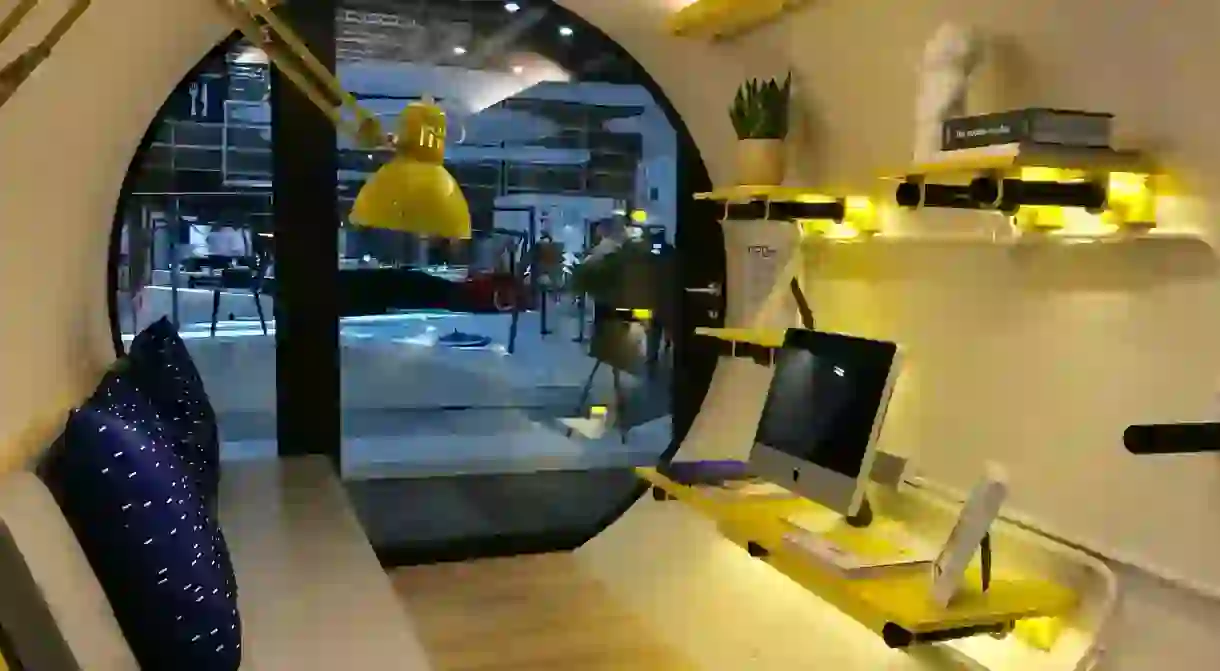Could Concrete Pipes Be the Answer to Hong Kong's Housing Crisis?

With Hong Kong’s exorbitant rental market spiralling out of control, it’s the architecture and design industries that are looking for affordable ways to creatively combat this crisis. The latest offering is James Law Cybertecture’s OPod Tube Housing – cheap and flexible micro-homes made out of a surprising material: concrete water pipes.
This isn’t the first time that we’ve touched on Hong Kong’s eyewateringly expensive rent, which is ranked as the least affordable in the world, according to the 2017 Demographia International Housing Affordability Survey. Currently there are as many as 200,000 people who are living in tiny coffin-like sub-divided flats in the city, which are just 3.7 square metres on average.

Hong Kong’s creative industries are rapidly looking for innovative ways to save future generations from this desperate situation. The latest design comes from James Law Cybertecture, which has come up with a prototype for micro-homes set within stackable concrete water pipes.
The idea might seem basic, or even crude to the naked eye – sleeping in a pipe doesn’t sound like the dream scenario – but the OPod Tube Housing concept could be a genuine short-term solution to the housing crisis. For starters, the pods are 9.29 square metres, more than double the size of the unsafe, wood-partitioned cubicles that many are currently living in.

In addition, the average rent in Hong Kong currently stands at a whopping £1,500 a month, whereas Law reckons the micro-homes could be rented out for as little as £300 per month, costing £11,000 in total to make each pod.
The idea isn’t just about making property affordable, it’s also about space. Land is at an absolute premium in Hong Kong, with very little available or prioritised for new low-cost housing, despite the Society for Community Organisation (SoCO) constantly campaigning for better living conditions.

Because each tube is only 2.5 metres wide, they could easily slot into narrow gaps. And Law suggests they could be stacked up to four high without any additional supports, or even arranged in self-contained communities with structural support.
Each pod only weighs 20 tonnes, which means they can easily be transported to another location via a crane and a long trailer, making them a flexible solution to temporarily relieve the pressure on the rental market.

The glazed front door, which lets in plenty of natural light, is unlocked via your smartphone – step inside and you’re greeted by a bright, whitewashed living area with flat wooden flooring that adds a touch of warmth to the interior as well as being a practical option.
Clever furniture has been installed such as a bench-cum-bed, with cushions doubling as a mattress, plus there’s a mini fridge, microwave cooker and clothes rail. The shower room, which is screened off to the rear of the pipe, is covered with crisp white hexagonal tiles and slatted flooring for drainage.

The OPod is only at prototype stage at present, but Law is currently in talks with the local government to put his plans into action and start installing the pods in vacant areas of the city. While this isn’t certainly isn’t the first micro-home concept to try and tackle a city’s urban housing crisis, it’s a sensible and flexible short-term solution, which is desperately needed to combat Hong Kong’s volatile housing market.

Read more about Hong Kong’s housing crisis in this article that reveals how as many as 200,000 are living in tiny ‘coffin’ homes throughout the city.













